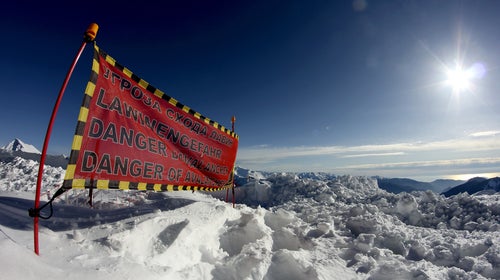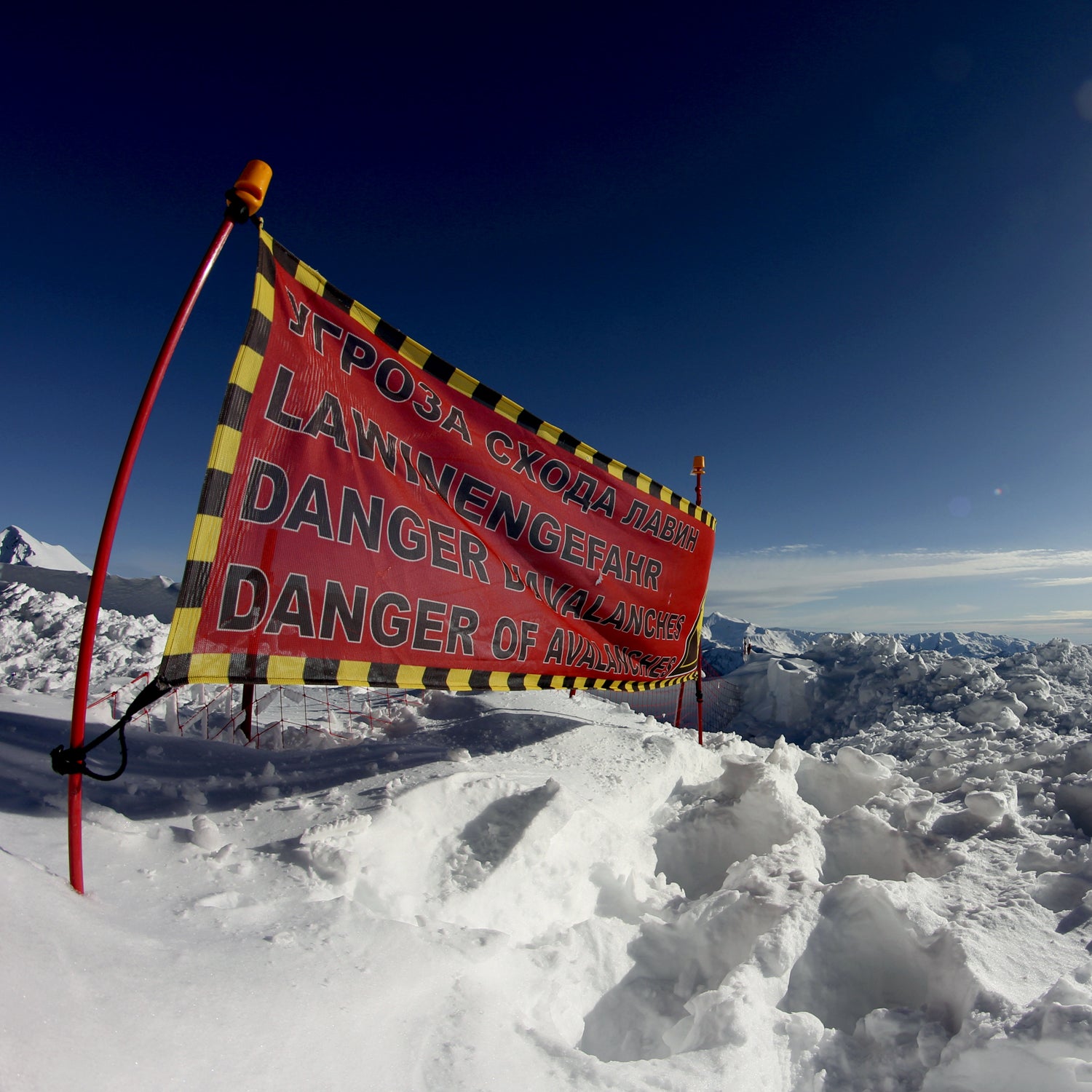Heading to the backcountry responsibly means knowing how to handle the worst. Equip yourself with these three basic tools. Really make sure you learn how to use them quickly and intelligently in an emergency. When we say this is life-or-death knowledge, we mean it.
Beacon
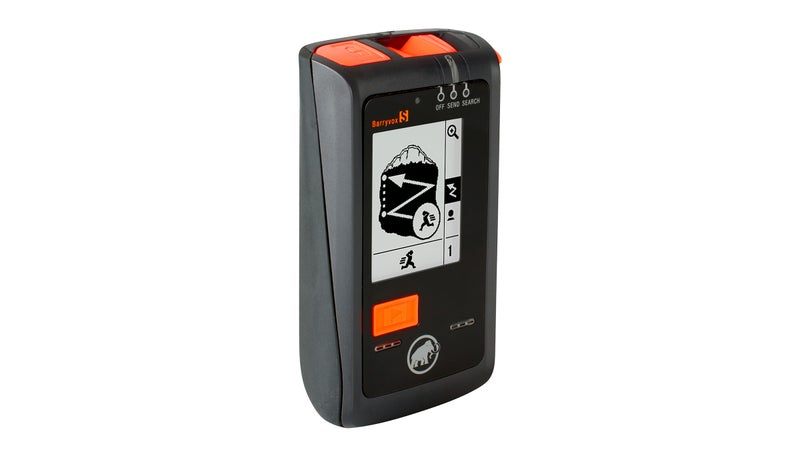
Beacons have become increasingly sophisticated over the years, but the best one for you is the one you’re most comfortable using. If you don’t practice as often as you should, keep it simple. For people who spend a lot of time in avalanche country, Mammut's Barryvox S ($500) offers the longest range of detection: 70 yards. The simplified interface uses large pictographic instructions to keep you focused.
Use It Right: Beacons transmit and receive radio signals over a relatively small (60- to 100-foot) range. When a person is buried, rescuers switch their beacons to receive mode, spread out across the debris, and search in a coordinated pattern. To hone your skills, head to one of the 40 beacon parks at ski resorts and trailheads across North America (find one at backcountryaccess.com), then go practice in the field.
Video: How to use your a beacon
Probe
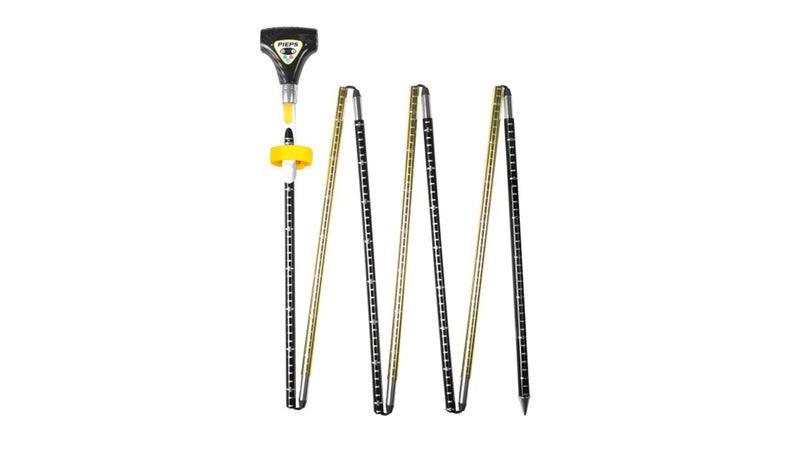
The ideal probe is long (at least 240 centimeters) and deploys with a flick of the wrist. One of our favorites: Pieps’ iProbe Two ($155). The ten-foot-long iProbe Two has a built-in receiver that beeps when it detects the signal from a burial victim’s avalanche beacon, so you can find your target on the first try. Avoid ski poles that convert to probes; not only are they usually too short, but removing ski baskets and screwing -together segments wastes precious time.
Use It Right: Once you’ve located a beacon signal, work in a spiral pattern, probing every ten inches outward from the center of the signal. Insert the probe at a 90-degree angle to the snow. As soon as you’ve got a strike, leave the probe in place and holler for the rest of your team to come running with shovels.
Shovel
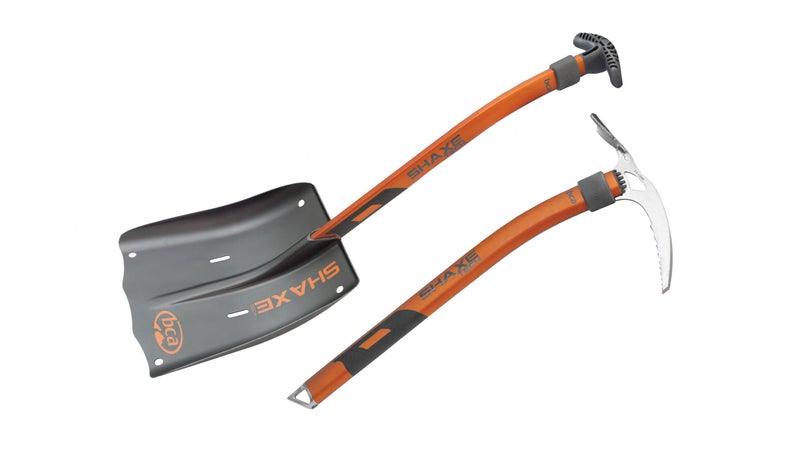
While it might be tempting to save weight with a plastic blade, avalanche debris is often hard and compressed. Choose a shovel with a sturdy aluminum blade and an extendable handle that you can assemble in a panic. We like the new dozer-style scoop models, like the BCA Shaxe Tech Shovel ($196). There aren’t many instances in which you need an ice ax (or what the French call a piolet) and an avalanche shovel at the same time. So BCA came up with a single tool that incorporates both. It also includes hardware for rigging a rescue sled out of compatible skis.
Use It Right: Once you locate someone, note the depth of your probe strike and move downhill that distance. Then start burrowing in. Save energy by shoveling snow to the sides of the pit. Position secondary shovelers in a triangle formation behind you—to clear away snow and rotate in as fresh shovelers.
Is there really an app that turns your phone into an avalanche beacon?
No. However, in 2016, Sweden’s KTH Royal Institute of Technology developed an app—tentatively dubbed Appalanche—that uses a smartphone’s transceiver to help triangulate the position of a buried person via radio signals. Everyone in your group must be running the app, and the more people there are, the faster the process works. While the app could make a vital backup safety tool, it's not intended to replace a beacon. “It’s meant to be a supplemental resource,” says KTH's Petter Wirfält. Just remember: cell phones can cause beacons to go haywire, so keep them at least 17 inches apart. KTH hopes to have an Android version available this ski season. —Will Egensteiner
